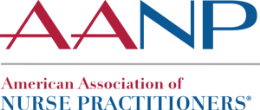Nurse Practitioners, Learn the Latest in Diabetes Care

Get free, cutting-edge insights on improving diabetes outcomes with the help of your national nurse practitioner organization.
According to the Centers for Disease Control and Prevention, about 1 in 10 people living in the U.S. have diabetes. More alarming still is the fact that about 1 in 5 people with diabetes don’t know that they have it — meaning 8.5 million Americans are living with diabetes that is both undiagnosed and untreated.
Thankfully, the treatment of diabetes in all its forms has seen much innovation and advancement since the invention of insulin more than 100 years ago. In observance of National Diabetes Month, the American Association of Nurse Practitioners® (AANP) is taking this opportunity to share the latest in diabetes diagnosis and treatment, developed by and for nurse practitioners (NPs).
Making Blood Glucose Monitoring Easier for Patients
As stated in a patient handout offered by AANP, “Hypoglycemia occurs when your blood glucose (blood sugar) levels drop below normal ranges and is a dangerous condition that may require medical treatment.” Hypoglycemia is one of the biggest risks for patients living with diabetes and requires all those affected to monitor and record their blood sugar levels frequently for proper prevention. For many years, patients living with diabetes would have to prick themselves with a blood glucose monitor regularly to successfully monitor their blood sugar levels. But thanks to new technological advancements, patients can monitor their diabetes without the need for drawn blood and calloused fingertips.
“Now, I think it’s so much easier for NPs to be able to provide patients with those resources that they need to succeed in managing their diabetes,” states Angela Thompson, DNP, FNP-C, BC-ADM, CDCES, FAANP. On the latest episode of AANP’s official podcast, NP Pulse, Dr. Thompson discusses her experience as a family NP in the care of both adolescents and adults with diabetes and how the management of diabetes has evolved. “With the inception of continuous glucose monitors — I mean, that’s really revolutionized the treatment because you have access to glucose levels all day long without having those patients test with a blood glucose monitor to achieve those readings.”
Continuous glucose monitoring (CGM) devices have helped providers such as yourself capture a much larger picture in terms of patients’ diabetes care. Thompson adds to this, stating: “It really helps the patient and the practitioner be able to see what variables affect glucose levels and have more of a precision medicine approach on selecting medications, as well as to be able to make adjustments ongoing.”
Reducing Risk Through Non-Insulin Antihyperglycemic Medications
Beyond enabling patients to make easy, on-the-spot adjustments to their insulin intake with the aid of CGM devices, there are other advancements in diabetes medication that can help patients prevent and combat hyperglycemia. Thompson reflects on these changes, explaining, “When I first came out of nursing school in the early 1990’s, there were essentially three medications available.” But times have changed, and options for patients treating and managing their diabetes are abundant. She adds, “Now we have medications that can help reduce the risk for progression of diabetes, we have medications that can protect a patient’s cardiovascular system, renal system, so it’s just exploded.”
How can you and your colleagues keep up with new medications and treatments as they become available? Thompson empathizes with her fellow NPs, stating, “Now, when you look at the options available, you almost have to have a complex chart to be able to determine the appropriate selection.” Thankfully, AANP has developed an easy-to-use chart to aid you as you explore pharmacologic options for your patients with diabetes, particularly those with Type 2 diabetes. Select “Medications for Type 2 Diabetes” in the Endocrinology Clinical Resources page to stay up to date about the various drug classifications, doses, indications and side effects of the many medications available for your patients.
Take Part in a Free Bootcamp on Type 2 Diabetes Management
Management of Type 2 diabetes has evolved rapidly in recent years due to new guidelines, new pharmacotherapies and new technologies. Enroll in the Clinical Advantage Bootcamp: Type 2 Diabetes Management Certificate for Nurse Practitioners in the AANP CE Center to earn 8.5 contact hours of continuing education credit.
In this six-module program, join Thompson and other expert faculty as they provide an overview of Type 2 diabetes; discuss diagnosis, management and guideline-based treatment strategies; and walk you through the pharmacotherapies and technology options for those with Type 2 diabetes.

